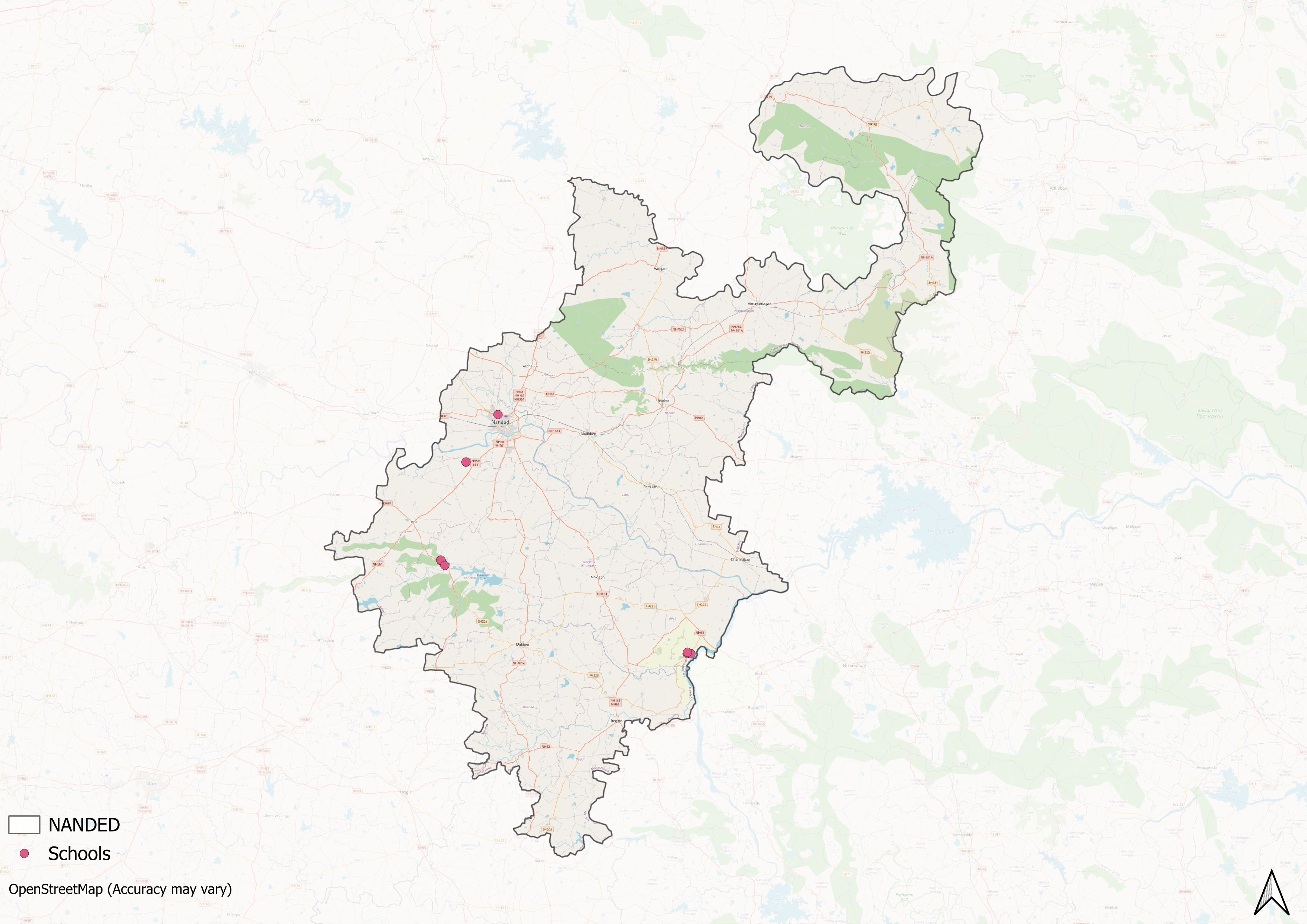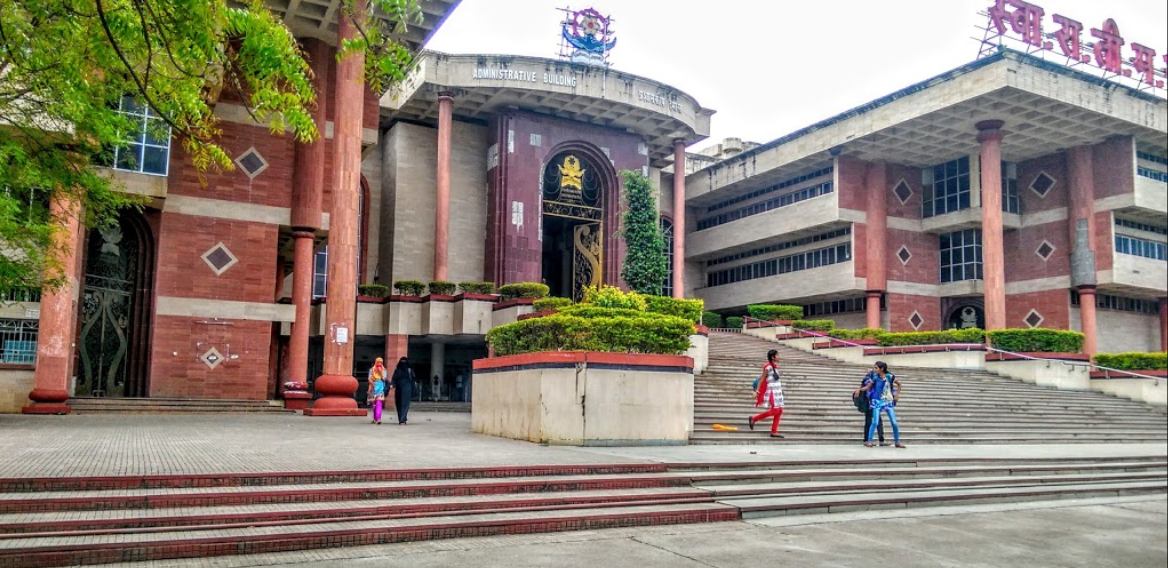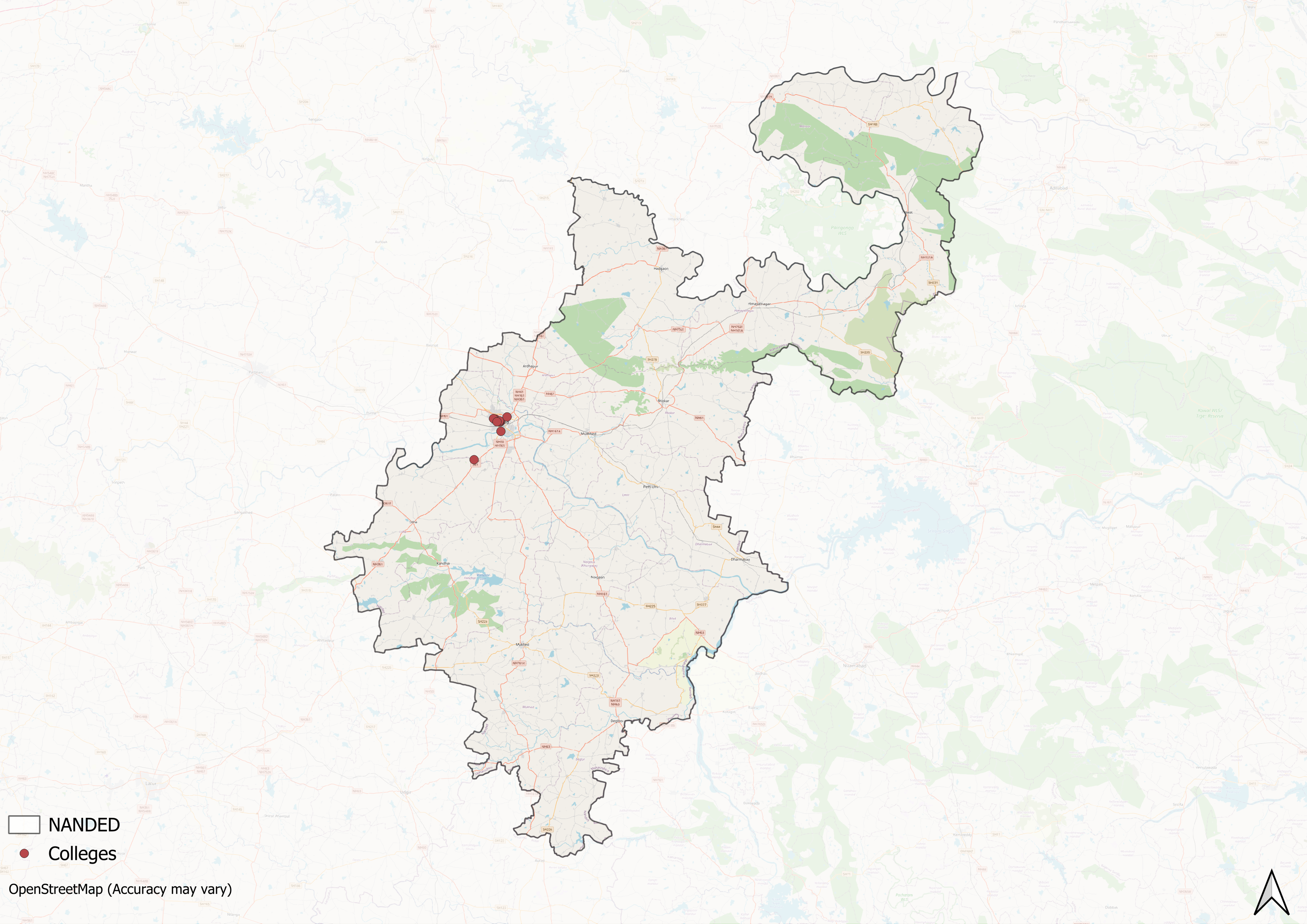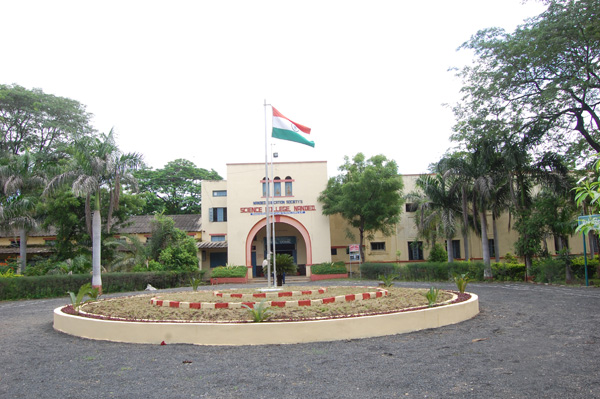Contents
- Early History
- Colonial History
- Post-Independence Era and Contemporary Educational Infrastructure
- Primary & Secondary Education
- Institutions of Higher Learning
- Swami Ramanand Teerth Marathwada University
- Shri Guru Gobind Singh Institute of Engineering and Technology
- Prominent Figures & Organizations
- Poojya Swami Ramanand Teerth
- NGOs and Community-Based Education Efforts
- Sanskriti Samvardhan Mandal
- Graphs
- Enrollment and Dropout Rate
- A. Student Enrollment Numbers
- B. Student Enrollment (Class-Wise)
- C. Student Enrollment (Gender-Wise)
- D. Student Enrollment (By School Management Type)
- E. Drop Out Rate (By Schooling Level)
- F. Drop Out Rate (By Gender)
- Schools
- A. No. of Schools
- B. No. of Schools (Filtered by Gender Mix)
- C. No. of Schools (By School Management Type)
- Teachers
- A. No. of Teachers
- B. No. of Teachers (By School Management Type)
- C. No. of Teachers (Male vs Female)
- D. Education Level of Teachers
- Sources
NANDED
Education
Last updated on 28 July 2025. Help us improve the information on this page by clicking on suggest edits or writing to us.
The educational framework of Nanded aligns with the broader structure of the Indian education system, encompassing pre-primary, primary, secondary, and higher education. By the 19th century, the introduction of the Western education framework in the district changed its educational landscape. British administrators and missionaries became actively involved in shaping education in the region. Additionally, as part of the Hyderabad State during this period, the district’s educational development was also influenced by the Nizams of Hyderabad.
Still, even as colonial influences grew, the early 20th century saw a wave of local initiatives; its existence indicated an increasing public awareness regarding the importance of education. Local communities took charge of education, a movement that carried into the post-independence era, shaping the district’s educational landscape in lasting ways.
Early History
Little is known about the history of education in Nanded, however, this does not imply that formal or any system of education was completely absent in the district. As in other parts of Maharashtra, it is likely that some form of traditional or informal education existed in the region in earlier times.
Additionally, Nanded has long been recognized for its cultural and literary significance. The district is associated with sant poets such as Vishnupant Sesa and Raghunath Sesa. Many also believe it to have been a center of Sanskrit learning in earlier times.
Colonial History
During the colonial period, Nanded was under the rule of the Nizam of Hyderabad as part of the princely Hyderabad State. Detailed records of the educational infrastructure in Nanded during the Nizam's rule are not known. According to the district Gazetteer (1971), Urdu, the official language of the Hyderabad administration, is said to have broadly served as the principal medium of instruction in schools. Persian and Arabic were also promoted. However, it remains unclear to what extent these policies were implemented uniformly across regions like Latur, and whether local variations in language use or access to education existed.
Post-Independence Era and Contemporary Educational Infrastructure
Following India's independence, the education system in Nanded underwent major transformations. The introduction of structured education levels—pre-primary, primary, secondary, and higher education and the implementation of National Education Policies heavily shaped the educational landscape of the district. Over the years, the education sector developed with contributions from both government-funded institutions and private organizations. Additionally, Educational boards were also introduced, each offering distinct curricula and standards, providing students with more choices.
Primary & Secondary Education
During the colonial period, both public and private efforts in education primarily focused on primary and secondary schooling, as indicated by data from district gazetteers across Maharashtra. Higher education remained underdeveloped in most districts, including Nanded, with gradual improvements over time. While basic infrastructure for primary and secondary education existed, its expansion was closely tied to increasing enrollment and greater involvement of local figures.

Today, this expansion is evident in the widespread presence of schools across various wards of Nanded, with available data reflecting the steady growth of educational institutions in both urban and rural parts of the district.
Institutions of Higher Learning
Perhaps one of the most notable changes in Nanded’s educational landscape is tied to the establishment of higher education institutions. While primary and secondary schooling expanded steadily, opportunities for advanced education remained limited for much of the district’s history. Over time, local leaders and organizations played a crucial role in addressing this gap, leading to the creation of several colleges. As a result, many institutions in the district today are privately managed, semi-private, or autonomous.
Swami Ramanand Teerth Marathwada University

Swami Ramanand Teerth Marathwada University (SRTM University) was established in 1994 by the Government of Maharashtra to address the growing demand for higher education in the southern Marathwada region. The university’s jurisdiction covers the districts of Nanded, Latur, Parbhani, and Hingoli. Since its inception, the university has aimed to expand access to higher education through both conventional and digital learning platforms.
Shri Guru Gobind Singh Institute of Engineering and Technology
The Shri Guru Gobind Singhji Institute of Engineering and Technology (SGGS Institute) was established on 17 December 1981 in Nanded, with financial support from the Government of Maharashtra. The institute is named after Guru Gobind Singh, the tenth Sikh Guru, and was founded on land donated by the Sant Shri Baba Harnamji Trust.
Prof. B.M. Naik was appointed as the first full-time Principal in 1983. Under his leadership, the institute expanded its academic and infrastructural capacities. In 2004, following a national survey, the institute was identified as one of three institutions with potential for excellence. This recognition led to the grant of autonomous status, providing the institute with greater academic, administrative, and financial flexibility.

In addition to these institutions, a number of centres for higher education operate throughout the district, which offer programmes across various disciplines. While the landscape of higher education has broadened significantly since independence, disparities in access, particularly along geographic lines, remain evident.
Prominent Figures & Organizations
Poojya Swami Ramanand Teerth
Swami Ramanand Teerth was an educator, social reformer, and political leader closely associated with the educational and political development of the Marathwada region. He viewed education as a means to uplift the socio-economically disadvantaged areas of the former Hyderabad State, including Nanded. As a key figure in the Hyderabad State Congress, formed in 1938, he advocated for civil rights and democratic reforms during the rule of Nizam VII, Mir Osman Ali Khan, and played a notable role in the integration of Hyderabad into the Indian Union.

In 1950, Swami Ramanand Teerth founded the Nanded Education Society (NES) with the aim of expanding access to education in Marathwada. The society began by establishing People’s College and later responded to the need for science education by founding NES Science College in 1963.

With support from community donors and public figures, the society developed a campus covering approximately 84 acres. Over the years, NES has focused on expanding academic infrastructure and adapting to changing educational needs. Key contributors to its development included Swami Ramanand Teerth and Govind Bhai Shroff.
The Nanded Education Society continues to operate multiple institutions and remains an important part of the region’s educational landscape.
NGOs and Community-Based Education Efforts
Education has been a key driver of social reform, particularly in addressing inequality and expanding access to learning. While formal institutions provide structured education, many communities continue to face barriers due to poverty, social stigma, or lack of resources. To address these challenges, various organizations in Nanded have focused on community-based education initiatives, with each working to tackle specific social challenges present in the district.
Sanskriti Samvardhan Mandal
Sanskriti Samvardhan Mandal, based in Nanded, is one such organization working to improve educational access in rural and economically disadvantaged areas. The Mandal operates multiple institutions, including schools that incorporate both general education and specialized training. Its programs include Fine Arts, vocational education, and technical training, reflecting an emphasis on both academic and skill-based learning.
One of its key initiatives is the Sainiki Vidyalaya, which prepares students for careers in the Indian armed forces. In addition, the organization has introduced programs such as “One Student–One Hobby–One Skill” and runs the Ekalavya Academy for Sports Development to encourage all-round development. Through a combination of formal and co-curricular initiatives, Sanskriti Samvardhan Mandal has contributed to expanding educational opportunities in the district.
Graphs
Enrollment and Dropout Rate
Schools
Teachers
Sources
B.G. Kunte et. al. 1971.Maharashtra State Gazetteers: Nanded District. ed. I. Government Printing Stationery and Publication, Bombay.
Dr. P. Jyothsna. 2022.History of Nizam’s Era and Education in Hyderabad State Before Independence. International Journal of Multidisciplinary Educational Research, Vol. 11, No. 3.
MCRHRDI. Village Visit - Nanded.https://www.mcrhrdi.gov.in/splfc/village%20v…
Pallavi Smart. 2024. “ASER 2023: Study Shows Nanded Dist. Kids from 14 to 18 Yrs Lag in Basic Math, English Reading Skills.” The Indian Express.https://indianexpress.com/article/cities/mum…
Schools.org.in. Govt Asram HS Bodhadi BK.https://schools.org.in/nanded/27151502005/go…
SS Mandal. Education.https://ssmandal.net/education/
Swami Ramanand Teerth Marathwada University. “About SRTM University. ”Swami Ramanand Teerth Marathwada University.https://srtmun.ac.in/en/about-srtmun/about-u…
VSK Telangana Archives. “Swami Ramanand Tirtha: Liberation of Hyderabad State and Its Annexation into Bharat Rashtra.” VSK Telangana Archives.https://archives.vsktelangana.org/swami-rama…
Last updated on 28 July 2025. Help us improve the information on this page by clicking on suggest edits or writing to us.